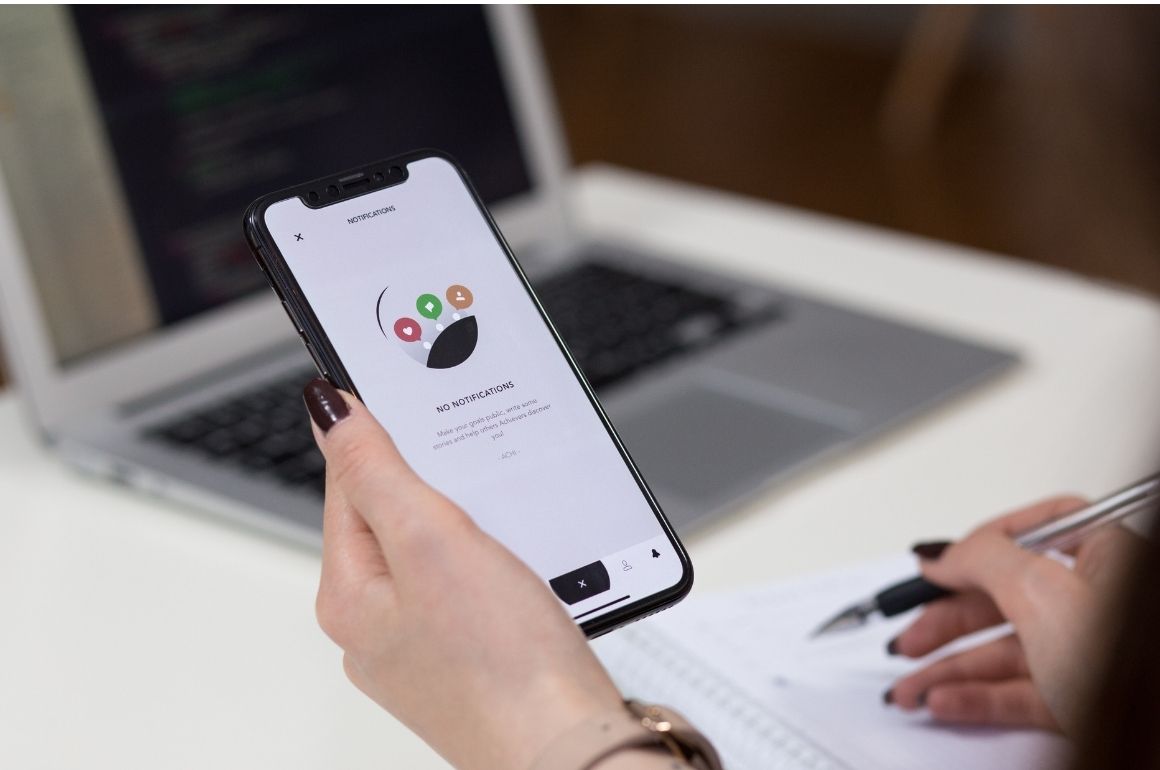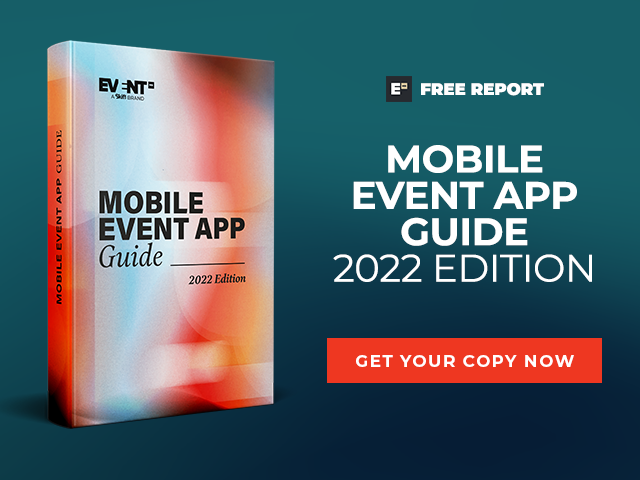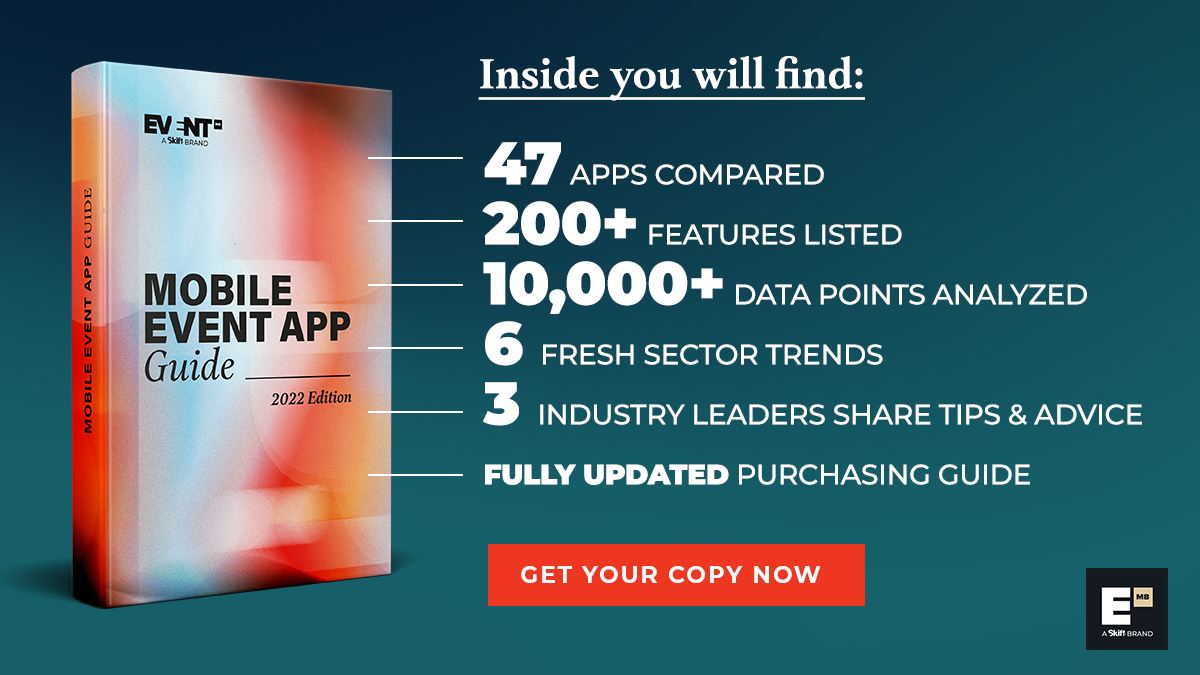This article is based on content included in the 2022 edition of the EventMB Mobile Event App Guide. The full guide is a highly recommended resource for all event professionals interested in mobile event apps. Download your copy for free today!
1. Understand the Full Cost
The price tag has never been more important to an event professional. After struggling through cancellations and depleted revenue — in some cases, no revenue at all — you’ll be focused on what an app will mean for your event’s bottom line. There’s no simple structure for breaking down the costs of each app into a side-by-side comparison, so it helps to think about a few key questions that can guide the way you frame the financial investment.
Is this the first time you’re offering an app to your attendees?
If you’ve never had an app for your event, don’t feel the need to add every bell and whistle available. The more features you add on, the more you’ll pay. It’s wise to start small to determine what truly matters to your audience in terms of functionality and features.
Do you have a strategy to use the app on a regular basis?
Getting locked into a monthly subscription fee can sound overwhelming, but it can be worth the money if you can keep the app relevant throughout the year with timely content and exclusive networking opportunities.
How many attendees are you expecting this year?
The most common approach to pricing is a per-attendee model. As you start your search, be sure to have an up-to-date forecast of the size of the crowd you’re anticipating in 2022.
How will attendees be connecting?
In addition to the number of attendees, you’ll want a concrete idea of what proportion will be connecting remotely versus coming onsite. Many providers have separate pricing for virtual-only, in-person-only, and hybrid events.
How easy will the tech be for your team to use?
Technology doesn’t just cost money. It also costs the investment of time needed for your staff to learn how to manage it. As you compare products, make sure that everyone who will be involved in the heavy lifting of getting the app ready to go can watch a demo and offer feedback on what feels the most intuitive. And while better support services may come with higher upfront costs, the investment may be worth the time it will save your team.
2. Separate Must-Have vs. Cool-to-Have Features
Some apps come with a laundry list of available features. While Tinder-style networking, beacon-based tracking, and voice-activated searching all sound like add-ons for the app of the future, think about which features will deliver real value for your attendees. If you’ve offered an app in the past, look at a breakdown of the tools that your audience relied on throughout the event. How many attendees actually participated in the game’s leaderboard or opted into reward opportunities? How many scanned a QR code for a business card?
Ask the providers you’re considering for a look at every feature that comes standard with no additional cost attached to it. Then, look at the a la carte options that will increase your spend. Additionally, you’ll want to think carefully about features that could potentially upset your audience. Facial recognition and attendee tracking may sound appealing, but some will look at these as invasions of privacy.
3. Prioritize Sponsor and Exhibitor ROI
The right mobile event app shouldn’t simply be a cost to your organization — it should include revenue opportunities that either offset some of the expense or cover it entirely. Most apps include the basics of sponsor and exhibitor profiles, but today’s sponsors and exhibitors are looking for more ROI than what a simple listing can offer. Be sure to have those in charge of your event sponsorship department comb through all the features to determine what might be sellable.
But don’t just think about the features you can use — pay extra attention to how the tech provider can help you articulate what those features did with post-event reporting. You’ll want to be able to offer robust analytics that show sponsors and exhibitors how their investment paid off with attendee engagement and elevated brand awareness.
4. Enable a Hybrid Experience
The ability to live stream video has quickly become one of the nuts-and-bolts features of mobile event apps. As virtual participation soared over the past two years, there has been an explosion of tools designed for attendees who couldn’t participate in person.
Think about your plans for a hybrid event this year and which features could be game-changers for all members of your audience: matchmaking between remote and in-person attendees, a virtual lead retrieval system, the option to access live streaming across all channels. While many organizers will shift their focus primarily to the face-to-face component and the bigger dollar signs attached to it, those who can also keep at-home attendees engaged will win the future of events.
5. Research the Company Behind the App
When you’re trying to figure out the best decision for purchasing an event app, there’s a somewhat intangible component to the process that doesn’t involve a price or a list of features. Instead, you’ll want to get a good sense of the company’s ethical compass. The event industry has been hammered by the pandemic, and there is no more concrete way for tech partners to show their support than to offer contracts that accommodate rapid pivots and price adjustments that account for scaled-back needs. The same goes for the many providers that offer discounted rates for non-profits.
Outside of flexible contracts and pricing, ask about what you can expect from a service perspective. Most companies indicate that they respond to support requests in less than 24 hours, and some guarantee support is available in less than one hour. That speed is important, but you should also ask about the type of dedicated resources you’ll have. Will you deal with the same contacts throughout the process of developing your app? Have you asked peers in the event industry about their experience with the company? Technology is only as good as the people who build it, so make sure you feel comfortable thinking of the individuals at the company as an extension of your own team.
6. Double Check Service Level Agreements
Another important factor to consider is a company’s Service Level Agreement or SLA for short. These are contractual agreements that lay out the precise expectations your event tech provider is committing to meet in terms of the reliability of their technology. They should include details like a guarantee for network availability or uptime. The SLA will also outline penalties for failing to meet these commitments.
In an era where tech glitches can seriously damage an event organizer’s reputation, it’s pivotal to ensure that your event app partner is willing to put their commitment to reliability and quality on paper.







